在中国饮食文化的斑斓长卷中,川菜始终是最具生命力的一笔,既扎根巴蜀的沃土,又盛满川人的热肠。它跳出“唯辣论”的刻板印象,以调味为魂、食材为本,把麻的清冽、辣的醇厚、鲜的灵动揉进每一道菜里,藏着对生活的滚烫热爱。无论是清晨街巷里的红油抄手,还是饭点桌前的麻婆豆腐;无论是宴席上惊艳的开水白菜,还是宵夜摊红火的冷吃兔,每一口都是巴蜀烟鲜活注脚。
今天,就让我们一同解锁川菜的风味密码,寻觅藏在筷尖的巴蜀故事吧!本期让我们跟随翻译2504班何袁瑶同学的脚步,走进山清水秀的巴蜀大地,品味这份浸润着川江气息的独特美味。
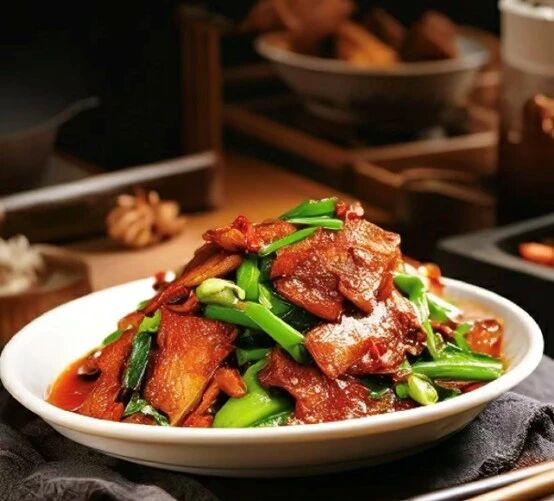
蒲公“英”说书人:
介绍:我是翻译2504班的何袁瑶,是一个外向的人,爱好是看书画画和追番,热衷二次元。

原文:
Sichuan Cuisine
Of the eight major schools of China's culinary art, Sichuan cuisine is perhaps the most popular. Originating in Sichuan Province of western China, Sichuan cuisine, known as Chuan Cai in Chinese, enjoys an international reputation for being spicy and flavorful. Yet the highly distinctive pungency is not its only characteristic. In fact, Sichuan cuisine boasts a variety of flavors and different methods of cooking, featuring the taste of hot, sweet, sour, salty, or tongue-numbing.
The origin of Sichuan cuisine can be traced back to the Qin and Han dynasties (221BC-220AD), its recognition as a distinct regional system took place in the Han dynasties (206BC-220AD). As a unique style of food, Sichuan cuisine was famous more than 800 years ago during the Southern Song Dynasty (1127-1279) when Sichuan restaurants were opened in Lin'an, now called Hangzhou, the capital. The hot pepper was introduced into China from South America around the end of the 17th century. Once it came to Sichuan, it became a favored food flavoring. In the late Qing Dynasty around 19th century, Sichuan cuisine became a unique local flavor, enjoying the same reputation with Shandong, Guangdong (Canton) and Huaiyang cuisines.
Sichuan has high humidity and many rainy or overcast days. Hot pepper helps reduce internal dampness, so it was used frequently in dishes, and hot dishes became the norm in Sichuan cuisine. The region's warm, humid climate also necessitates sophisticated food-preservation techniques which include picking, salting, drying and smoking.
Sichuan has been known as the land of plenty since ancient times. It produces abundant domestic animals, poultry, and freshwater fish and crayfish. Sichuan cuisine is well known for cooking fish. The raw materials are delicacies from land and river, edible wild herbs, and the meat of domestic animals and birds. Beef is more common in Sichuan cuisine than it is in other Chinese cuisines, perhaps due to the widespread use of oxen in the region. Stir-fried beef is often cooked until chewy, while steamed beef is sometimes coated with rice flour to produce rich gravy.
Sichuan dishes consist of Chengdu, Chongqing and vegetarian dishes. Masterly used cooking techniques are sauteing, stir-frying without stewing, dry-braising, Pao (soaking in water) and Hui (frying then braising with corn flour sauce). Sichuan cuisine is famous for its distinct and various flavors, the most outstanding ones are fish flavors, pepper powder boiled in oil, strange flavor and sticky-hot.
Statistics show that the number of Sichuan dishes has surpassed 5,000. Dishes typical of Sichuan are twice cooked pork, spicy diced chicken with peanuts, dry-fried shark fin, and fish-flavored pork shred. One of the popular dishes is Pockmarked Woman's bean curd (or Mapo Doufu in Chinese) which was invented by a Chengdu chef's pockmarked wife decades ago in the Qing Dynasty (1644-1911). The cubed bean curd is cooked over a low flame in a sauce which contains ground beef, chili, and pepper. When served, the bean curd is tender, spicy, and appetizing. Although many Sichuan dishes live up to their spicy reputation, often ignored are the large percentage of recipes that use little or no spice at all, including recipes such as tea smoked duck.
(本文摘录自CHINADAILY2004-01-09)
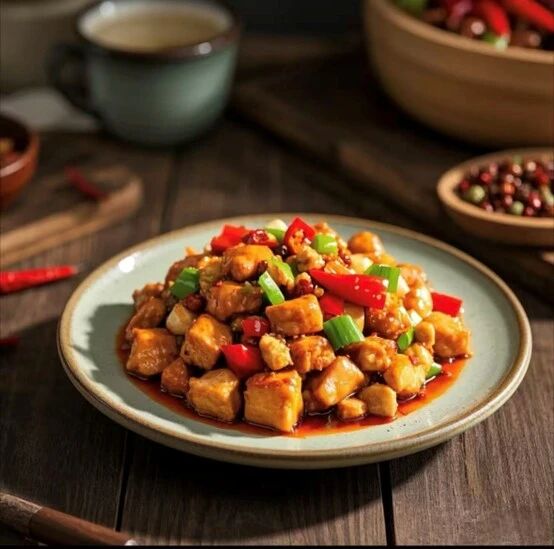
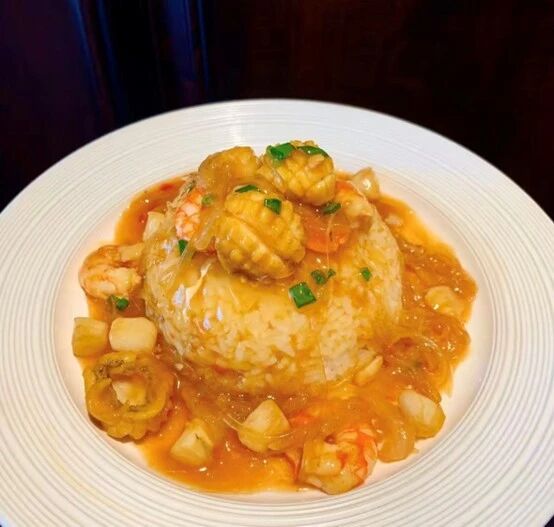
译文:
川菜
在中国八大菜系中,川菜或许是最受欢迎的。川菜源于中国西部的四川省,中文称“川菜”,以其辛辣味美享誉国际。然而,这种极具特色的辛辣并非其唯一特点。事实上,川菜口味多样、烹饪方法各异,有麻辣、甜、酸、咸或麻味等风味特点。
川菜的起源可追溯至秦汉时期(公元前221年-公元220年),在汉代(公元前206年-公元220年)形成了独特的地域菜系体系。作为一种独特的饮食风格,川菜在800多年前的南宋时期(1127-1279年)就已声名远扬,当时都城临安(今杭州)就开设了川菜馆。辣椒于17世纪末左右从南美洲传入中国,传入四川后,便成为备受青睐的调味品。到19世纪左右的晚清时期,川菜成为独具特色的地方风味,与鲁菜、粤菜(广东菜)和淮扬菜齐名。
四川气候湿润,阴雨或多云天气较多。辣椒有助于祛湿,因此在菜肴中被频繁使用,辣味菜肴也成为川菜的常态。该地区温暖潮湿的气候还催生了复杂的食物保存技术,包括腌制、盐渍、风干和烟熏等。
四川自古以来就被称为“天府之国”,盛产家畜、家禽以及淡水鱼和小龙虾。川菜以烹制鱼类菜肴见长,食材有水陆珍馐、可食用的野菜以及家畜家禽肉。牛肉在川菜中比在其他中国菜系中更为常见,这或许是因为该地区广泛使用耕牛。小炒牛肉常被烹制得有嚼劲,而蒸牛肉有时会裹上米粉,以调出浓郁的肉汁。
川菜由成都菜、重庆菜和素菜构成。其精湛的烹饪技法有嫩煎、无炖煸炒、干烧、泡(水浸)和烩(先煎后用玉米淀粉汁焖煮)等。川菜以其独特多样的风味著称,其中最突出的有鱼香、油泼辣子、怪味和麻辣。
数据显示,川菜的菜品数量已超过5000道。典型的川菜有回锅肉、宫保鸡丁、干炸鱼翅和鱼香肉丝。其中一道受欢迎的菜肴是麻婆豆腐,它由清代(1644-1911年)一位成都厨师脸上有麻子的妻子在几十年前发明。切成方块的豆腐在含有牛肉末、辣椒和花椒的酱汁中用小火烹制,上桌时豆腐嫩滑、辛辣且诱人。尽管许多川菜都符合其辛辣的名声,但常常被忽视的是,有很大一部分菜肴几乎不用或完全不用香料,比如“茶熏鸭”这道菜。
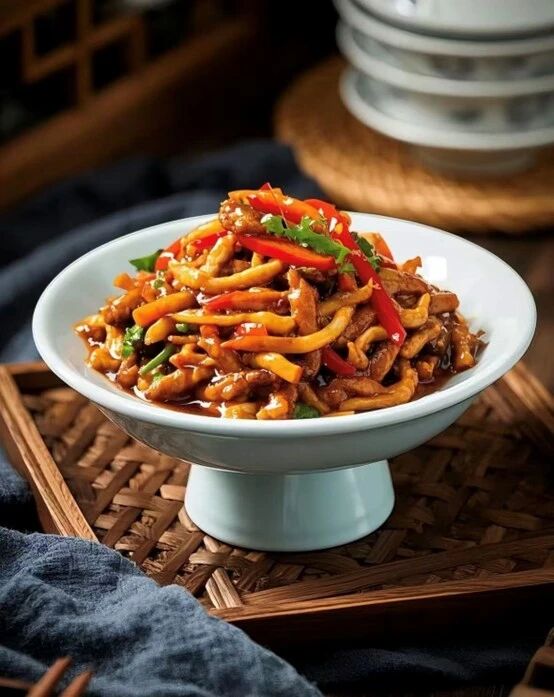
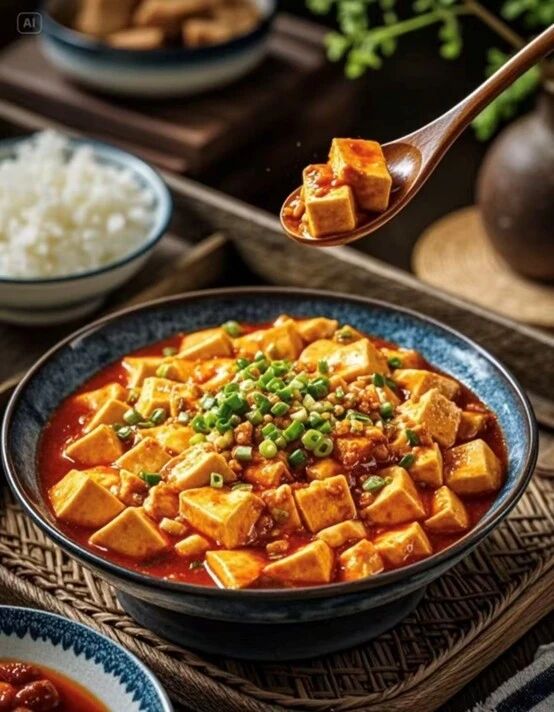
四六级关键词,接住啦:
Culinary 烹饪的
Originating 起源于
Reputation声誉
Distinctive独特的
Trace追溯
Recognition认可
Flavoring调味
Humidity湿度
Abundant丰富的
四六级暴击,小试牛刀:
Question 1:What is the key reason why hot pepper is frequently used in Sichuan cuisine?
A.It was introduced into Sichuan earlier than other regions in China.
B.It helps reduce internal dampness due to Sichuan's humid climate.
C.It can make Sichuan dishes more popular internationally.
D.It is the cheapest flavoring in Sichuan's local markets.
Answer: B
解析:答案对应原文第3段。该段明确提到“Sichuan has high humidity and many rainy or overcast days. Hot pepper helps reduce internal dampness, so it was used frequently in dishes”(四川气候湿润,阴雨、阴天较多,辣椒有助于祛除湿气,因此常被用于菜肴中),直接解释了辣椒在川菜中频繁使用的核心原因。A选项“比中国其他地区更早传入四川”,原文仅提及辣椒17世纪末从南美传入中国后受四川喜爱,未对比传入时间;C选项“让川菜在国际上更受欢迎”,原文说川菜因辛辣风味享誉国际,但未将其作为辣椒常用的原因;D选项“是四川本地市场最便宜的调味料”,原文未提及辣椒的价格属性,故A、C、D均错误。
Question 2:When did Sichuan cuisine become a unique local flavor and enjoy the same reputation with Shandong, Guangdong and Huaiyang cuisines?
A.During the Qin and Han dynasties (221BC-220AD).
B.During the Han dynasties (206BC-220AD).
C.Around the late 19th century (late Qing Dynasty).
D.During the Southern Song Dynasty (1127-1279).
Answer: C
解析:答案对应原文第2段。该段末尾指出“In the late Qing Dynasty around 19th century, Sichuan cuisine became a unique local flavor, enjoying the same reputation with Shandong, Guangdong (Canton) and Huaiyang cuisines”(19世纪左右的清末时期,川菜成为独特的地方风味,与鲁菜、粤菜、淮扬菜齐名),明确了时间节点。A选项“秦汉时期”,原文仅说川菜起源可追溯至秦汉,并非成为知名地方风味的时间;B选项“汉代”,原文提及汉代川菜成为独立区域菜系,而非与鲁、粤、淮扬菜齐名;D选项“南宋时期”,原文说南宋时川菜馆在临安开设,川菜已知名,但未达到与上述三菜齐名的程度,故A、B、D均错误。
Question 3:Which of the following dishes is NOT a typical Sichuan dish according to the passage?
A.Twice cooked pork.
B.Tea smoked duck.
C.Sweet and sour pork.
D.Mapo Doufu (Pockmarked Woman's bean curd).
Answer:C
解析:答案对应原文第6段。该段明确列举典型川菜:“Dishes typical of Sichuan are twice cooked pork, spicy diced chicken with peanuts, dry-fried shark fin, and fish-flavored pork shred. One of the popular dishes is Pockmarked Woman's bean curd (or Mapo Doufu in Chinese)”(典型的川菜有回锅肉、宫保鸡丁、干烧鱼翅、鱼香肉丝,麻婆豆腐也是热门川菜之一),同时提到“Although many Sichuan dishes live up to their spicy reputation... including recipes such as 'tea smoked duck'”(尽管多数川菜以辛辣著称,但也有不少少辣或不辣的菜品,如樟茶鸭),说明樟茶鸭也属于川菜范畴。C选项“糖醋里脊(Sweet and sour pork)”未在原文中作为川菜提及,故为正确答案。




